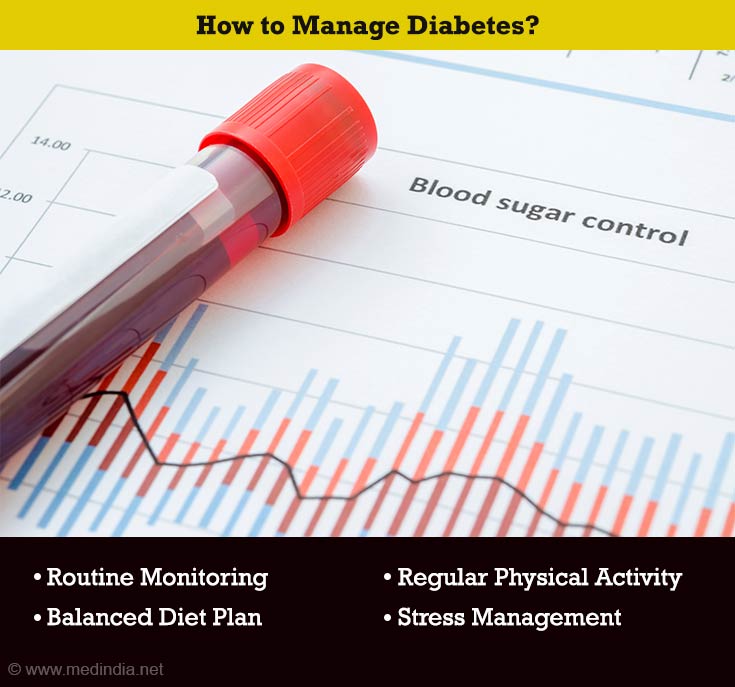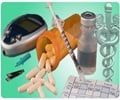- Diabetes - (https://pubmed.ncbi.nlm.nih.gov/31855345/)
- Type 1 Diabetes - (https://pubmed.ncbi.nlm.nih.gov/29939535/)
- What is type 2 diabetes? - (https://pubmed.ncbi.nlm.nih.gov/21151710/)
- Adherence to Low-Carbohydrate Diets in Patients with Diabetes: A Narrative Review - (https://pubmed.ncbi.nlm.nih.gov/35210797/)
- Exercise and insulin sensitivity: a review - (https://pubmed.ncbi.nlm.nih.gov/10683091/)
- Intensive lifestyle changes are necessary to improve insulin sensitivity: a randomized controlled trial - (https://pubmed.ncbi.nlm.nih.gov/11874928/)
- Stress-Induced Diabetes: A Review - (https://www.ncbi.nlm.nih.gov/pmc/articles/PMC9561544/)
- Therapeutic Role of Yoga in Type 2 Diabetes - (https://pubmed.ncbi.nlm.nih.gov/30112866/)
- Strength training is more effective than aerobic exercise for improving glycaemic control and body composition in people with normal-weight type 2 diabetes: a randomised controlled trial - (https://pubmed.ncbi.nlm.nih.gov/37493759/)
- Gestational Diabetes - (https://pubmed.ncbi.nlm.nih.gov/31424780/)
About
In the realm of modern health challenges, diabetes stands as a prevalent and pervasive concern affecting millions worldwide. Taming diabetes involves a multifaceted approach, encompassing lifestyle adjustments, dietary modifications, and a keen understanding of the intricacies of blood sugar control. Here is a comprehensive guide, that delves into the nuances of diabetes, management strategies, and steps to reverse or prevent its progression.
What are the Types of Diabetes?
Diabetes, a chronic condition characterized by elevated blood sugar levels, comes in various forms(1✔ ✔Trusted Source
Diabetes
Go to source). Type 1 diabetes results from the immune system attacking insulin-producing beta cells, leading to insulin deficiency(2✔ ✔Trusted Source
Type 1 Diabetes
Go to source).
On the other hand, Type 2 diabetes involves insulin resistance, where the body's cells do not respond effectively to insulin(3✔ ✔Trusted Source
What is type 2 diabetes?
Go to source). It is essential to comprehend these distinctions to tailor management strategies effectively.
Controlling Diabetes with Diet and Lifestyle Modifications
A pivotal aspect of taming diabetes revolves around diet and lifestyle modifications. Adopting a low-carb diet has shown significant benefits in managing blood sugar levels. This dietary approach focuses on reducing the intake of carbohydrates, especially those with a high
By doing so, individuals can better regulate blood sugar levels and manage their condition more effectively. Incorporating nutrient-dense foods, such as fruits, vegetables, and whole grains, while limiting processed sugars and refined carbohydrates, aids in controlling diabetes(4✔ ✔Trusted Source
Adherence to Low-Carbohydrate Diets in Patients with Diabetes: A Narrative Review
Go to source).
Regular exercise is equally crucial. Physical activity enhances insulin sensitivity, allowing cells to utilize glucose effectively(5✔ ✔Trusted Source
Exercise and insulin sensitivity: a review
Go to source). Engaging in a combination of aerobic exercises and weight training contributes to better blood sugar control.
Tackling Type 2 Diabetes and Insulin Resistance
Type 2 diabetes, often associated with lifestyle factors, can be effectively managed and even reversed through strategic interventions. Understanding insulin resistance is paramount. Lifestyle changes, including weight loss, regular exercise, and a balanced diet, play key roles in enhancing insulin sensitivity(6✔ ✔Trusted Source
Intensive lifestyle changes are necessary to improve insulin sensitivity: a randomized controlled trial
Go to source).
How to Control Blood Sugar Levels?
Controlling blood sugar levels is a central theme in diabetes management. Monitoring sugar intake is crucial, and this extends beyond avoiding sweets. Understanding the glycemic index of foods helps individuals make informed choices, preventing spikes in blood glucose levels. Regular blood glucose testing is essential to track patterns and make timely adjustments.
Diabetes Guide: A Holistic Approach to Management
A holistic approach to diabetes management involves addressing not only dietary and lifestyle factors but also emotional well-being. Stress can impact blood sugar levels unpredictably(7✔ ✔Trusted Source
Stress-Induced Diabetes: A Review
Go to source). Incorporating stress-reducing practices such as mindfulness, yoga, and meditation can significantly contribute to taming diabetes.
Yoga and Weight Training for Diabetes
Yoga, with its emphasis on controlled movements and mindful breathing, has shown promise in improving insulin sensitivity and promoting overall well-being(8✔ ✔Trusted Source
Therapeutic Role of Yoga in Type 2 Diabetes
Go to source). Additionally, weight training contributes to muscle development, enhancing the body's ability to manage glucose effectively(9✔ ✔Trusted Source
Strength training is more effective than aerobic exercise for improving glycaemic control and body composition in people with normal-weight type 2 diabetes: a randomised controlled trial
Go to source).

Tips for Taming Diabetes
- Regularly monitor blood glucose levels to identify patterns and trends.
- Create a balanced and nutritious diet plan with the guidance of a healthcare professional.
- Engage in regular physical activity, combining aerobic exercises with weight training.
- Adopt stress management techniques such as mindfulness, meditation, or yoga.
- Stay informed about the latest developments in diabetes management.
Blood Sugar Chart, Blood Glucose Testing, and Tracking
Maintaining a blood sugar chart and regularly conducting blood glucose testing are indispensable components of diabetes management. These tools provide valuable insights into how the body responds to various stimuli, facilitating informed decision-making. Utilizing a blood sugar tracker allows for continuous monitoring and better trend analysis.
National Diabetes Prevention Program
The National Diabetes Prevention Program (NDPP) stands as a pioneering initiative aimed at curtailing the increased prevalence of diabetes, particularly Type 2 diabetes, through a proactive and preventative approach(10✔ ✔Trusted Source
Gestational Diabetes
Go to source). Grounded in evidence-based practices, the NDPP emphasizes lifestyle modifications to mitigate the risk of diabetes onset in individuals at high risk. The program is structured around structured curricula delivered in a group setting, focusing on behavioral changes related to diet, physical activity, and weight management.
Central to its effectiveness is the encouragement of sustainable, healthy habits that have demonstrated efficacy in improving insulin sensitivity and maintaining blood glucose levels within a healthy range. By fostering awareness, imparting practical skills, and offering ongoing support, the NDPP empowers participants to make informed choices, fostering a paradigm shift towards proactive diabetes prevention within communities. Its significance lies in its potential to arrest the progression of a condition that has become a global health concern, heralding a proactive approach to public health and diabetes management.
Gestational Diabetes: Prenatal Care Essentials
Gestational diabetes, a temporary form of diabetes that emerges during pregnancy, necessitates a nuanced approach to maternal health and fetal well-being. Occurring when the body cannot produce sufficient insulin to meet the increased demands of pregnancy, gestational diabetes poses potential risks for both mother and baby.
Careful monitoring of blood glucose levels, often through regular glucose tolerance tests, is imperative to detect and manage this condition. Dietary adjustments, physical activity, and, in some cases, insulin therapy are employed to maintain blood sugar within a safe range.
While gestational diabetes typically resolves postpartum, it raises the risk of developing Type 2 diabetes in the future for both the mother and the child. This underscores the importance of vigilant prenatal care, emphasizing early detection, intervention, and ongoing management to safeguard the health of both expectant mothers and their offspring. Education and support during pregnancy play a pivotal role, in ensuring optimal outcomes for both the immediate and long-term health of both mother and child.
Taming diabetes is an ongoing journey that requires a comprehensive and individualized approach. By understanding the different types of diabetes, adopting healthy lifestyle choices, and staying informed about the latest advancements, individuals can take control of their health. With a focus on proper nutrition, regular exercise, and proactive diabetes management, it is possible to lead a fulfilling and healthy life despite the challenges posed by diabetes.
















